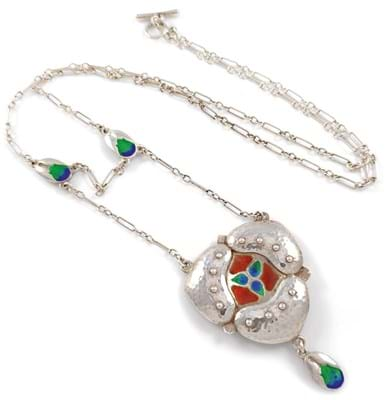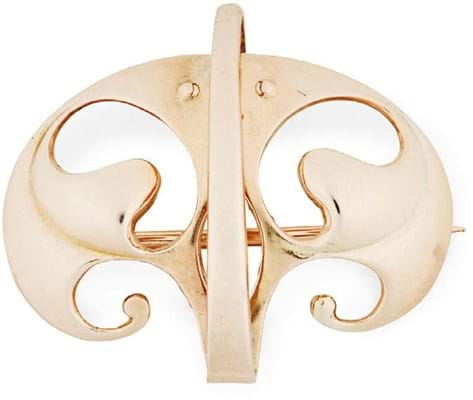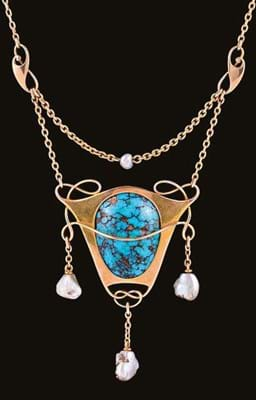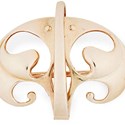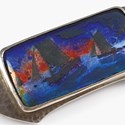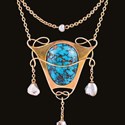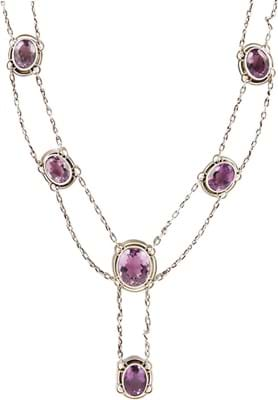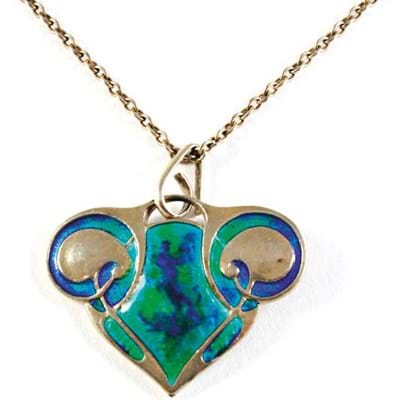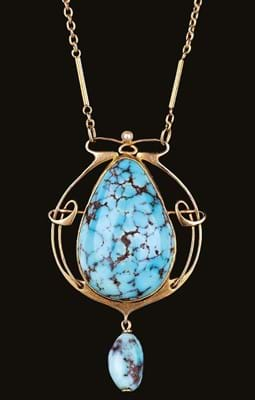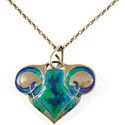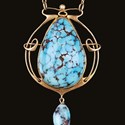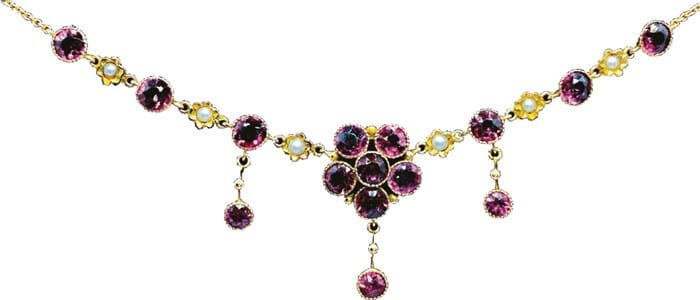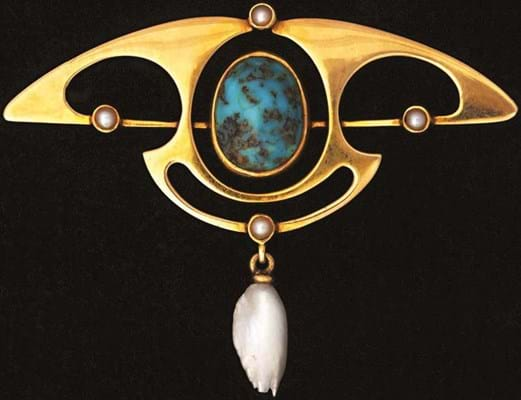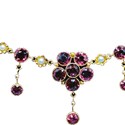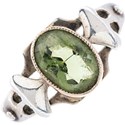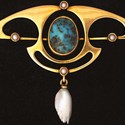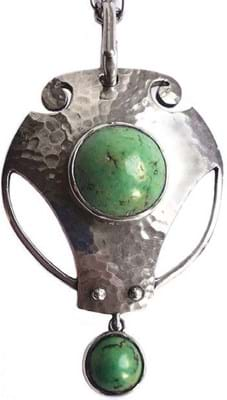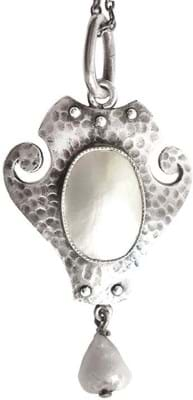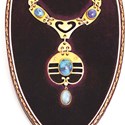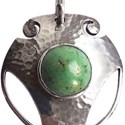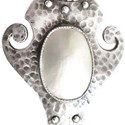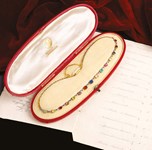In 1891 an Anglo-German firm by the name of Siegele & Bennett was advertising as ‘manufacturers and importers of British and Foreign jewellery’ giving its address as 13 Charterhouse Street, London, and 39 Bleichstrasse in Pforzheim.
It was this partnership, later renamed Murrle Bennett & Co, that did most to introduce Jugendstil (literally youth-style) jewellery to a British audience.
Murrle Bennett jewels are commonplace but the people behind it – German émigré Siegele, his cousin Ernst Mürrle and their British partner JB Bennett – remain somewhat enigmatic.
Some of the best information on the firm is found in Theodor Fahrner Jewellery: Between Avant-garde and Tradition (1998) by Ingeborg Becker, Ulrike von Hase-Schmundt and Christianne Weber.
Although operating from an address close to the Hatton Garden jewellery district, the majority of Murrle Bennett’s business was based in Siegele and Mürrle’s hometown – the so-called ‘Goldstadt’ of Pforzheim in south-west Germany.
Here, as hundreds of goldsmiths and watchmakers rubbed shoulders with designers, retailers and wholesalers, the manufacturing process approached industrial levels.
Murrle Bennett specialised in gold and silver fashion jewellery made in the cross-section of European styles that come under the Art Nouveau umbrella. Foliate forms or pierced geometric shapes are punctuated by colourful enamels and precious and semi-precious stones. It was cultured yet affordable – the perfect fodder for British retailers such as Liberty & Co.
Mürrle travelled to Pforzheim up to six times a year to choose eye-catching designs, with Immanuel Saake (a part-owner of Murrle Bennett) arranging exports of the finished products to the UK, France and South Africa.
Much of the work was outsourced to graduates of the city’s Herzoglichen Kunstgewerbeschule und Fachschule für die Metallindustrie (Ducal School of Arts and Crafts and School for the Metal Industry), with Wilhelm Fuhner and Theodor Fahrner (1859-1919) particularly important suppliers. Occasionally, some pieces do have the double trademarks of both Fahrner and the MBCo stamp of Murrle Bennett & Co.
Archibald Knox is also thought to have worked with the firm (some of the jewels show a Celtic influence) while some pieces incorporate enamel plaques in the manner of Charles Fleetwood Vardy.
Mürrle interned
However, the busy decade from c.1905 was to come to an end with the onset of war.
The First World War effectively ended Mürrle’s involvement with the firm (as a German he was interned on the Isle of Man) and ownership passed into the hands of British colleagues. By 1916 the firm was trading as White, Redgrove & Whyte, the sort of name befitting a firm of provincial accountants.
The Murrle Bennett output appeals today in much the same ways it did in the early 20th century – nice quality, effortlessly stylish and (in comparison with handmade Arts & Crafts jewels of the period) relatively accessible.
While prices have certainly risen since the turn of the 21st century, most pieces are available from £500-1500, with £2000-3000 buying something from the top of the range.
Pictured in this article is a selection of items, some of them recently sold at auction, others coming up for sale in the near future, plus a number of pieces available to buy today from specialist dealers.


